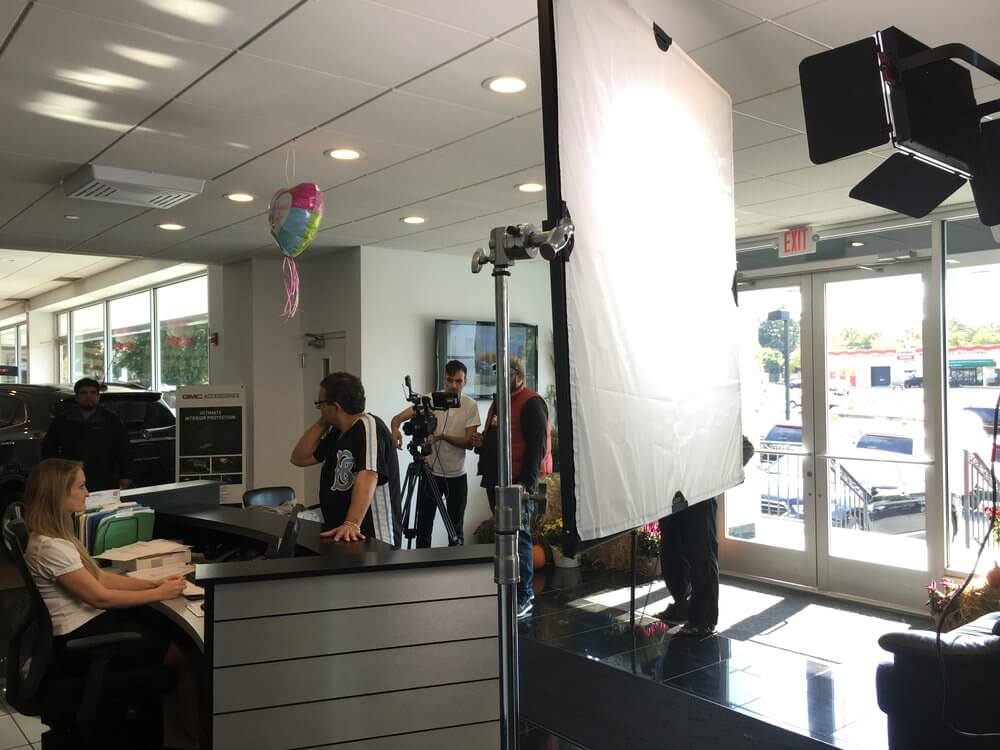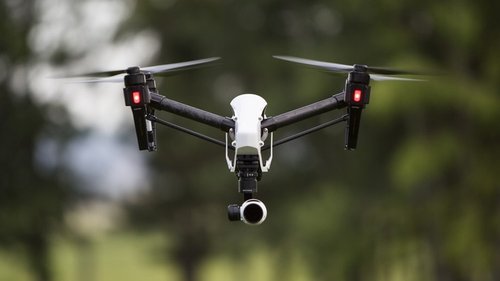Create Promotional Videos for Your Small Business
Video is a powerful marketing tool for your business. The next logical step is:
How do I actually make one?
The best way is to hire a professional videographer. They already have the equipment and experience to deliver a high quality video, like this one we filmed for a local business in New York City:
A short promo video is a great tool for any marketing plan, and can explain your business message in more detail than any print ad can do. Large corporations, governments, educational and non-profit agencies all spend money producing expensive promotional films or videos.
Many of these productions are even televised nationally.
So what if you’re a local small business owner who can’t afford the expense of a broadcast quality production? Even if your business could afford a professional thirty-second commercial, there is still the much larger expense of having it televised on a regular basis.
These are long-term and expensive contracts even in a small media market. Most small businesses can’t afford radio ads, much less local television.
On the other hand many small businesses have a web page, or possibly own a web site by now. So consider this. YouTube permits you to upload essentially what can be considered commercials, under certain strict conditions. YouTube videos are easy to embed on any web page.
Visitors can watch the promo video without having to leave the page. Just be sure to read all of YouTube’s Terms and Conditions before creating an account.
In general, everything in the video must be your creation or you own legal rights to use them, and you cannot charge fees to view any YouTube video. So a simple promotional video can enhance any web page, and is an affordable marketing tool for small business owners.
Your first thought might be to hire a local video production company. So look them up, pick up the phone and call around for some estimates. Prices vary depending on what size market you live in.
For example I live near Long Island. Depending on how you look at things it could be considered a mid to large size media market. As an example, the other day my chiropractor was telling me he wanted a sixty-second promo video of two talking heads for his web site.
Checking around we was getting estimates of up to two thousand dollars.
In defense, let’s consider it from the local production company’s perspective.
First starting at the top.
Those that rent or own storefronts and employ part-time staffs. That alone should tell you why they would charge two thousand dollars for a sixty-second web video. Moving on to the mid-range semi-pros who may or may not rent small office space and occasionally hire freelancers.
Then it depends on how much they have invested in equipment and how recently they upgraded, because that’s the bottom line.
Any production company has a lot of money tied up in high-end equipment whether they own a storefront or not. Most invest over two thousand dollars on the camera alone, and thousands more on pro quality tripods, light kits, computers, software and other gear.
They must purchase current technology to stay competitive, and these investments are meant to earn a profit. With the ever-changing technology of camera equipment, that’s not financially easy to do. So they try to recoup their investment by charging higher fees. Another thing influencing what they charge is how much they feel their experience or talent is worth.
Getting back to my chiropractor. He was only looking to make a minute-long video of him and his partner talking, a few office shots, maybe a couple shots of them in action. He only wants this little video embedded on his web page, not televised.
So broadcast quality video is unnecessary. Heck, a regular old camcorder will do the trick. Knowing this he might get a better price from the video guys listed in the classifieds, or a friend who owns some video equipment. This might also meet your needs for a simple project like this.
For instance if I wanted some extra cash I’d charge my chiropractor a few hundred bucks to do it. Someone with less experience may only charge a hundred. How? It’s only a web video of two talking heads, some b-roll and a few titles.
If you know what you’re doing a project this simple could be shot in less than two hours, and edited in three or four. Six hours of work, most of it on your fanny.
So now that you know this. You may as well do it yourself and save some money.
I’m not making friends in any local video production market by writing this. This could even have an impact on my own potential client base. But the fact is that you don’t need thousands in equipment to make a simple promotional video for the web.
All you really need is a decent camera, editing software, web space and a YouTube account. I have written a whole series of Yahoo! Contributor Network articles with tips on recording and editing videos at Help for Home Video Makers, but for now here are a few basic guidelines if you’re going to make your own business promotional video.
Let’s use the chiropractor’s one-minute video as an example.
The main overall goal is to deliver your business message in one minute. So whatever is said should be precise, in logical order, with an opening and summation at the end. Start by outlining your message and writing down everything that will be said.
Rehearse the dialog ahead of time to ensure your production will run smoothly on shooting day.
While writing your script, decide on what will be seen in the video. The chiropractor wants a talking head video explaining their business message w/b-roll over some parts. A simpler option would be to use title pages and photos with narration underneath.
You don’t have to use video. Talk into the camera and record. When you digitize the clip later on, just choose the ‘audio only’ or ‘no video’ option to create a smaller audio file.
While deciding on the visuals you might consider any music you plan on using. Your video will be publicly displayed on the web. Therefore you must own the rights of any music being used. You cannot use your personal CD collection.
It infringes on copyright laws. If you upload the video to YouTube they will eventually discover it and delete it anyway. With this in mind, you have a few options if you want to use music.
These days you can find licensed music CDs for around ten dollars. Do a search on ebay for ‘production music’ or try looking for deals at places like Footage Firm or New Dog Digital. There will usually be previews so you can hear what you’re buying.
Another option depending on what you’re using is your editing software. It may have some music you can use. Finally try a search for free music that has been authorized for commercial use. Digg ccMixter and Audionautix are good places to start.
After you’ve decided what will be seen and heard, you’ll need a camera. You can use just about any camcorder you want, even an older analog. Just make sure you can connect it to your computer. Most camcorders have the ability to connect via firewire or USB.
If it’s an older camera you’ll probably need an inexpensive video converter in between, but here’s an option if you own a digital camera. Most of us do these days.
Many digital photo cameras can record 4K or 1920×1080 video, big enough for a web video. They will either record uncompressed AVI (more desirable) or MPEG video files. Easy to transfer and use on a computer. With an 8-gig card you can probably fit almost an hour of AVI footage on it.
Take note that some cameras may record video in their own format and might not be suitable for your purposes, because you’ll have to convert the video with other software.
Whatever camera you use, make sure you have a tripod for stable shots. If someone is speaking to the camera be sure they are well lit. Position them in a favorable light. The camera should be close enough to pick up on the speaker. They should speak clearly and project their voices. Record whatever b-roll you need using a tripod. When digitizing those b-roll clips, choose the ‘no audio’ option to create smaller files.
For a project simple as this, you don’t really need expensive editing software. What you have on your computer might work, although will probably be very limited in what it can do. It is possible, but you might consider investing in a video editing software package that can fit your budget. Most video editing software is easy to use so you don’t need pro software.
You can find an inexpensive alternative for under $80 that will probably meet your needs. The important features to look for should be importing file formats your camera creates, and creating video files in a popular format like MPEG. Hint: do a search for user reviews of any software you are considering before purchasing.
The previous tips are useful if you’re only looking to make a simple promo video. All it takes is a small investment in time and money. One way to at it is this. This investment will eventually pay for itself. With more experience you can create new promo videos for your business in the future. With equipment you probably already have. The best part is that you won’t have to pay someone to do it.
Now if you’d rather get elaborate and make longer videos that include dramatizations, demonstrations, animations or the like, my advice is to hire a professional. But if you do decide to make your own simple promotional videos, I wish you all the best.
Good luck, and have fun!
(Photo by Jakob Owens on Unsplash)
2Bridges Productions Copyright © 2017. Address: 25 Monroe St, New York, NY 10002. Phone: 516-659-7074 – All Rights Reserved.
We are a participant in the Amazon Services LLC Associates Program, an affiliate advertising program designed to provide a means for us to earn fees by linking to Amazon.com and affiliated sites.







